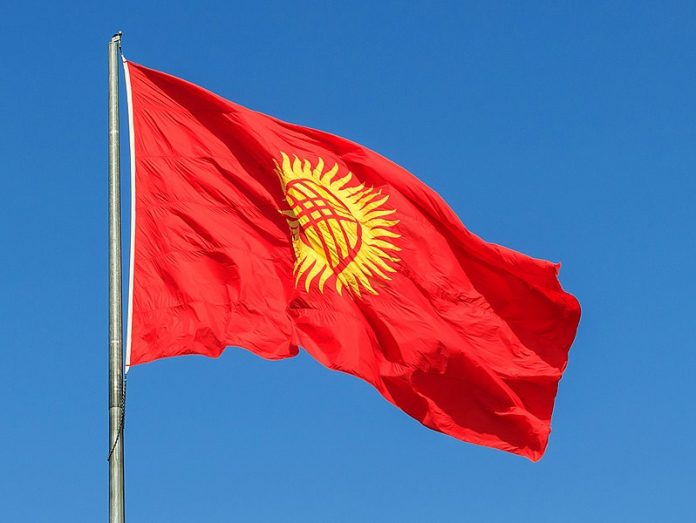The political situation that ensued after the latest parliamentary election in Kyrgyzstan this October took a rather dramatic but not at all untypical for the “Central Asia’s island of democracy” turn. The incumbent president Sooronbay Jeenbekov had to flee the White House when it was taken over by the demonstrators, while the prime minister, the speaker of the Parliament, and several governors announced their resignation. Now, when Jeenbekov has resigned, the country is looking at a special presidential election and a re-election for the Parliament. Such a scenario is inconceivable to the strictly authoritarian Central Asian neighbors of Kyrgyzstan with whom it shares a common Soviet past. So, what has hampered liberalization in other Stans, or rather made it possible in Kyrgyzstan?
From the start, an entire set of factors pointed to the impossibility of emergence of stably democratic regimes in the newly established post-Soviet republics of Central Asia: distance from the democratic world, resource curse of Kazakhstan and Turkmenistan, economic underdevelopment, and incipient religious radicalization. Thus, the real question should be, why Kyrgyzstan underwent such a transformation? Despite all five countries being ruled by extremely personalistic regimes from the outset of their independence from the Soviet Union, they differed not only in endowment of resources, but also in how the autocrats viewed prospects for civil liberties. The first president of Kyrgyzstan, Askar Akaev, was quick to adopt a modernizing outlook which entailed a multitude of policies geared towards liberalization of the economy along with privatization of land and the Soviet-style state-owned enterprises. However, the similar liberalizing tendencies were not endemic to the first rulers of Kazakhstan, Tajikistan, Turkmenistan, and Uzbekistan who at the time were preoccupied with consolidation of power and were distributing resources among the elites in a bid to form a body of loyal officials.
When it comes to the coercive capacities of the states, Kyrgyzstan is the only one among the post-Soviet Stans that has been lacking the centralized control over both the police and the military starting from its early days of independence. This peculiarity may be attributable to its mixed form of government possessing the qualities of both presidential and parliamentary systems. Although Akaev attempted to tip the scales in his favor by amending Constitution to grant more power to president, he was unsuccessful in taking full unequivocal control over the military. What made the Tulip Revolution, which led to the ousting of Akaev in 2005, truly possible, however, was the shift of allegiances of a number of law enforcement officers in the wake of civil unrest. Since Kyrgyzstan, as opposed to the resource-rich Kazakhstan, Turkmenistan, and Uzbekistan, cannot be classified as a rentier or even a semi-rentier state, the material support of the structures protecting the status quo was and still remains insufficient for ruling out the probability of high-ranked officials in the law enforcement changing sides. Moreover, Kyrgyzstan’s economy relies heavily on remittances that the government is incapable of redistributing to ensure unwavering allegiances which came in handy for some of the other Stans amidst mutinies.
Although the label of a rentier state is also inapplicable to Tajikistan, whose economy by and large relies on remittances and the state-controlled agriculture and manufacture, the civil war lasting from 1992 to 1997 compelled Emomali Rahmon, who emerged victorious, to fortify his control over virtually all aspects of state management, but most importantly, the military. Unlike in Kyrgyzstan, majority of Tajikistan’s state-owned enterprises were not privatized after the independence which has been enabling the authoritarian president to allocate the resources in a way most conducive to retaining allegiances of the law enforcement officials.
The vast array of coercive practices in all four Stans has quelled most of the nascent uprisings by instilling fear into the citizens, even the most free-minded ones. When revolts did break out, however, an adamant and astoundingly excessive force was applied which resulted in tragedies such as massacres in Andijan (Uzbekistan) and Zhanaozen (Kazakhstan). Persecution of journalists became a commonplace practice along with systematic human rights violations in all five republics. However, Kyrgyzstan’s methods of political repression were often deemed as more timid when compared to those of its neighbors.
While international financial support of opposition groups might have been a factor in the making of the Tulip Revolution, the Kyrgyz government was much more lenient than some other Central Asian states faced with a similar security threat. Such a response, or rather lack thereof, may be due to a limited military and intelligence capacities of Kyrgyzstan. Either way, the liberal transition of the state was not the one fully attributable to the political will of the reform-minded presidents, many of whom embraced autocratic practices later on. It is fair to say that the story of Kyrgyzstan is that of a failed dictatorship as much as it is the story of liberalizing authoritarianism. None of Kyrgyzstan’s neighbors ever displayed traits inherent to both of these regimes simultaneously. Is that about to change?
The views and opinions expressed in this article are those of the author.

The author is an Uzbek native, pursuing an International Affairs degree at Georgetown University School of Foreign Service. Has been published in multiple Russian media outlets with pieces on the Uzbek economy, latest reforms, and its foreign policy. Currently working on research in the area of meritocratic institutions in Central Asia and their impact on the economic growth in the region.


